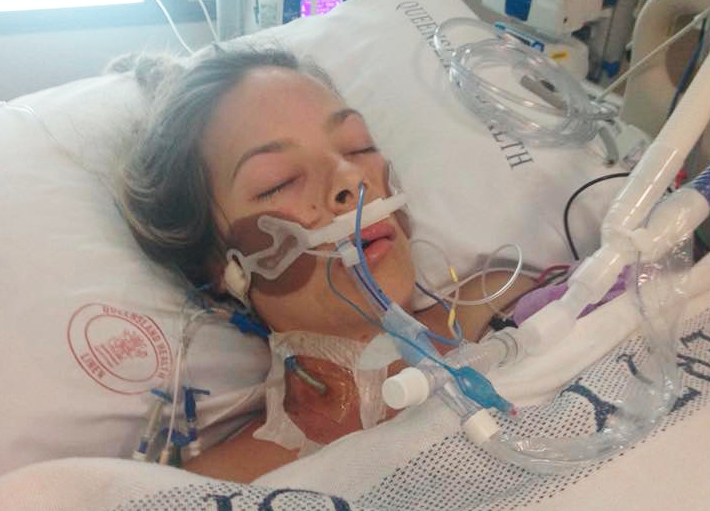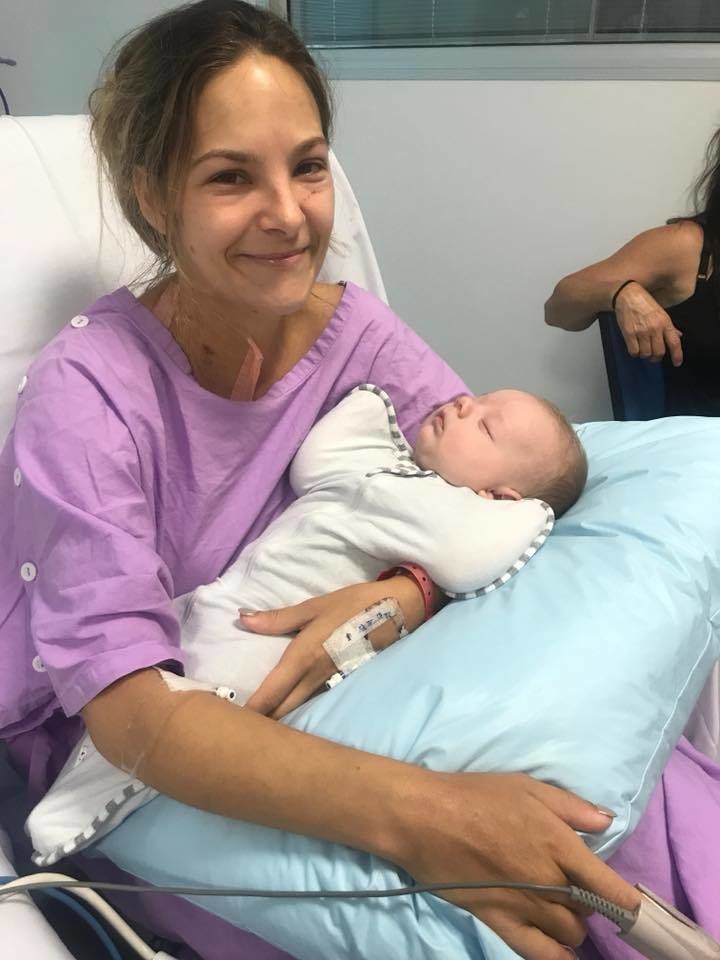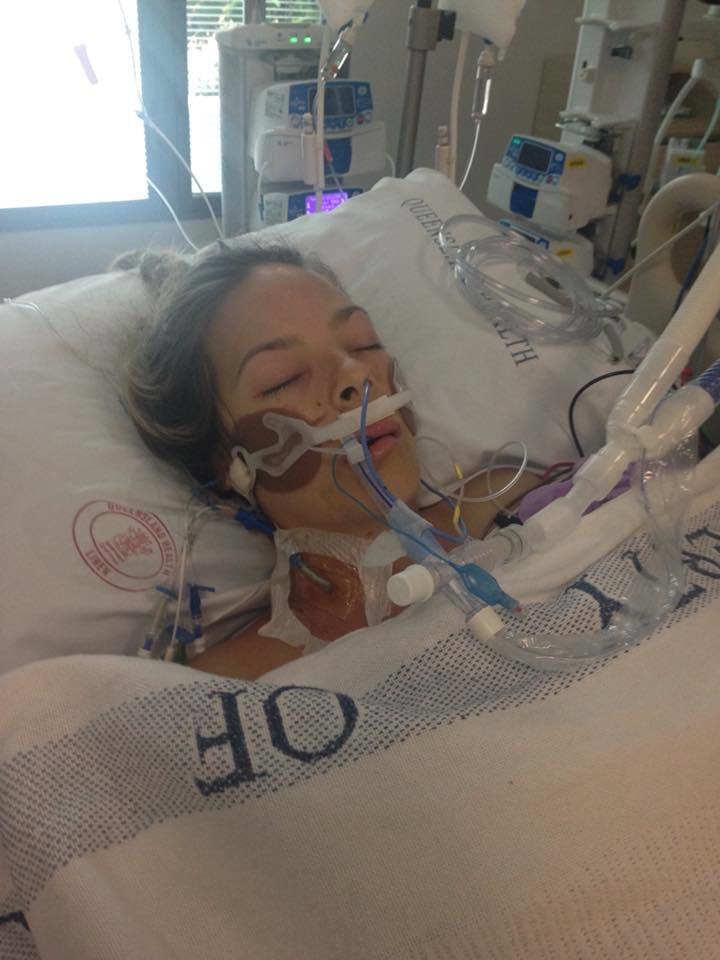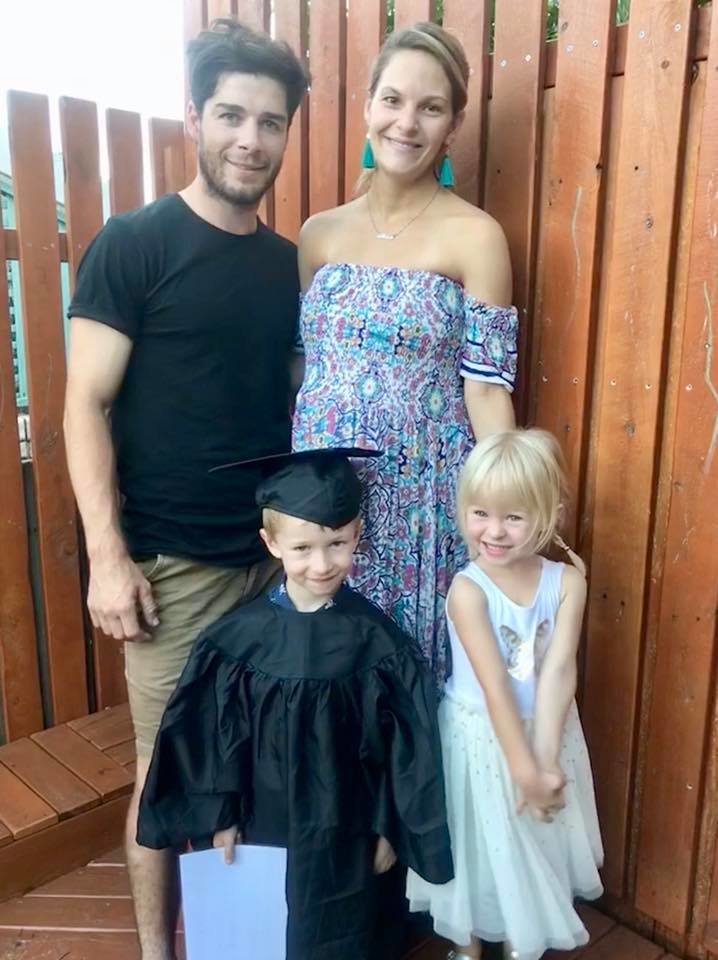
When considering the different options for birth control, many women turn to intrauterine devices (IUDs) because they have some serious perks. Not only do you not have to remember to take that pesky pill every day, but it's also 99 percent effective at preventing pregnancy, according to the Centers for Disease Control and Prevention. But one 25-year-old mom is speaking out to warn others about a little-known risk factor after having an IUD inserted that almost killed her.
Eight weeks after giving birth to her third baby, Shannon Hubbard decided to get an IUD.

With a 5-year-old, 3-year-old, and 8-week-old at home, Hubbard told Kidspot she and her partner knew they didn't want to immediately get pregnant again, but they still wanted the option to have more kids in the future. So when the Australian mom's doctor suggested Mirena, an IUD that releases small amounts of hormones into a woman's uterus to prevent pregnancy for up to five years, Hubbard agreed. "My GP suggested it might work for me as it is localized and therefore less likely to have side effects such as mood swings that I experienced on the pill," she told the Daily Mail.
According to Hubbard, her doctor did a Pap smear before clearing her for her March 22 insertion. Hubbard was told that some spotting was to be expected as she recovered after the procedure, but once she got home it quickly became clear that something was wrong. "I started to fill my pad within half an hour and was having large blood clots," she told Kidspot. "I called my GP and she said to go to emergency if it didn't settle.”
Hubbard was later rushed to the hospital, where the bleeding got to the point that it almost killed her.

As they took her from the emergency room, Hubbard said she was bleeding to the point that she soaked through pads, her pants, and had covered her wheelchair. "By this stage the clots were enormous, one was about eight centimeters," she said.
Doctors rushed her to surgery in an attempt to stop the blood loss, but it didn't work. After the surgery, Hubbard said she "woke to feel pools of clogged blood filling the bed. I pressed the buzzer for the nurse and before I knew it my room was filled with about 20 different staff."
Things got so bad that the new mom said she could feel herself dying. "The moment I knew I was close to death was when I got really, really cold, shaking uncontrollably, dizzy and lost consciousness," she said. "The next time I woke up I was in the ICU on the incubator, so I couldn't talk."
Ultimately, Hubbard needed 17 units of blood as well as three emergency surgeries to save her life.

Hubbard said that before her third surgery, blood was still "pouring out" of her as doctors worked to keep her alive. "I was still intubated, so I could talk but signed that I wanted my baby so I had a cuddle but I soon went back for the third surgery," she said. "I'm not sure how much blood was lost but normal hemoglobin is 140 and I got down to 43. I had 17 units of blood bags that are 240ml each."
Once she was stable, Hubbard says doctors told her this ordeal could have been completely avoided if her doctor hadn't made one serious mistake.

Hubbard's doctor allegedly missed that she has an inverted or "tilted" cervix, which means that her uterus tips back toward her pelvis instead of sitting in the vertical position. According to Mayo Clinic, around 20 percent of women have a "leaning" uterus — also commonly referred to as retroverted, tipped, or retroflexed. This can occur as the result of pregnancy, with age, or from previous conditions including endometriosis.
Although this position shouldn't impact an IUD's effectiveness, Hubbard's doctors at the hospital explained that the position affects where the IUD should be placed and her bleeding was completely preventable. "It's perfectly fine for women with retroverted or inverted cervixes to get a Mirena. My GP just put it in the wrong spot," she said.
Though what happened to Hubbard is not unique to the Mirena IUD, Mirena's warnings clearly state there's an increased chance of uterine perforation "if inserted in lactating women and may be increased if inserted in women with fixed retroverted uteri and postpartum." As a postpartum, breastfeeding mom with a retroverted uterus, Hubbard says she wasn't made aware of these increased risks by her doctor.
"I feel a little angry at the GP to be honest — when I spoke to her, she was completely unapologetic …." she said. "The only thing she said was, 'wow, aren't you lucky we have such a great health care system?' Which of course we are lucky to live [in] Australia but it was preventable so it's just not the point."
According to Hubbard, her uterus is damaged to the point that even if she were able to conceive again, it would be an extremely high-risk pregnancy.

Although Hubbard was having an IUD inserted because she didn't want to get pregnant in the immediate future, that doesn't mean that she and her partner didn't want more kids one day. "I feel robbed that I can no longer have children — robbed, saddened, and not as feminine. My whole identity in my adult life has been raising children so it's upsetting for sure," she added.
After over a week at the hospital, she's now home recovering both physically and emotionally.

"I'm still bleeding now but just minimally because the major tear in the uterus has been sewed up," she said. "To be honest it's still super fresh and at the moment I get into a panic. One minute I think I'm so grateful to be here and I cry thinking about my kids growing up without me. Then [the] next minute I feel angry and frustrated that this happened and how much it's changed my life.”
As upsetting as reliving her experience is, Hubbard hopes that talking about it will help raise awareness to the risks so no other mom goes through this. "Discuss with your doctor the increased risks for women who have just had a baby, and/or breastfeeding mothers," she told Daily Mail. "Also, discuss the position of your uterus and make sure they are aware and insert it accordingly."




